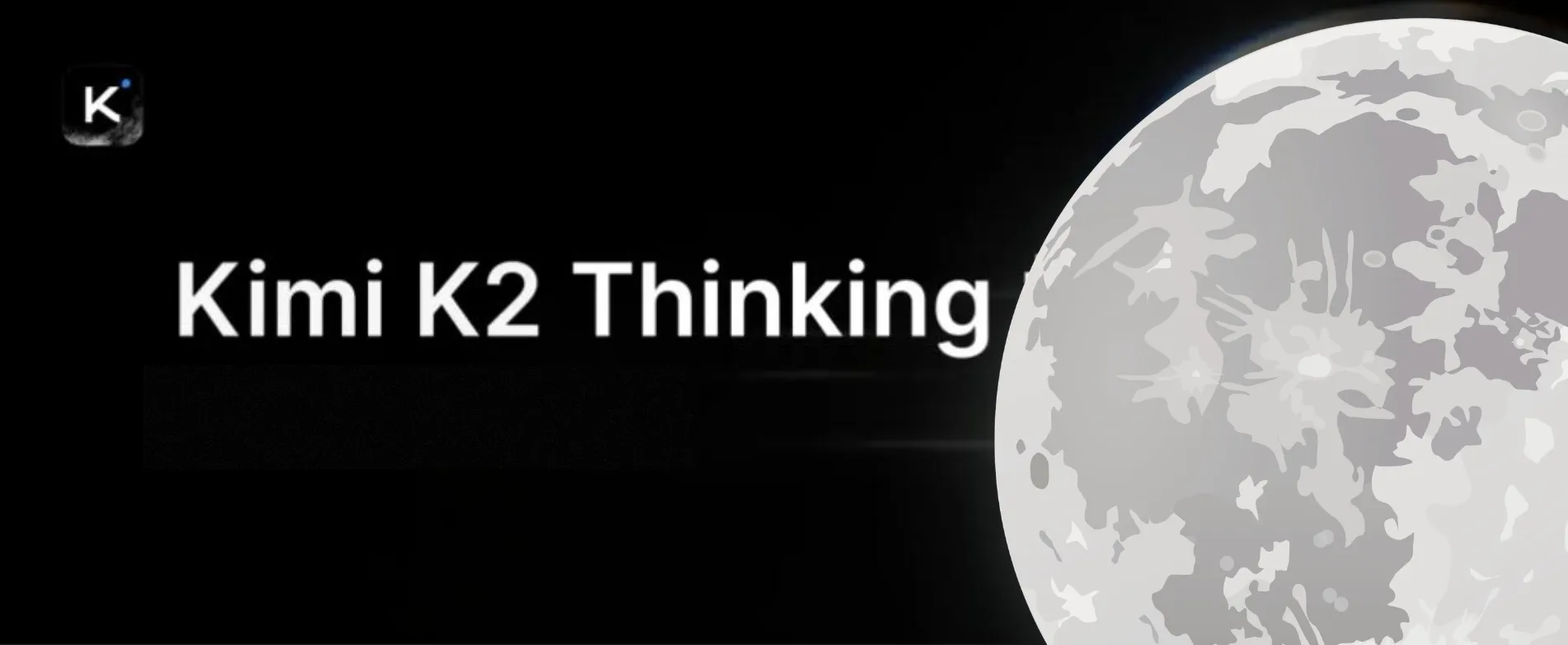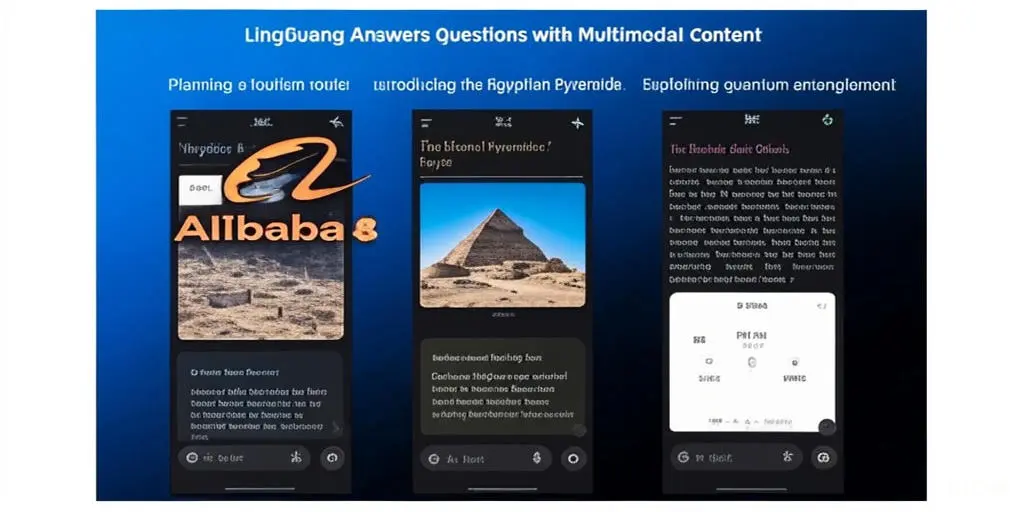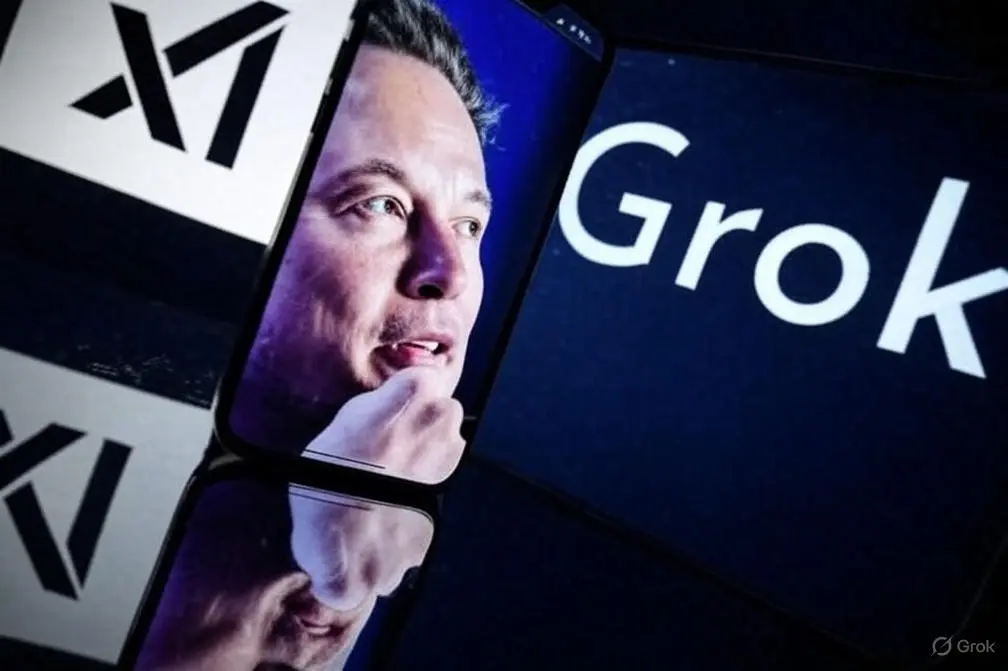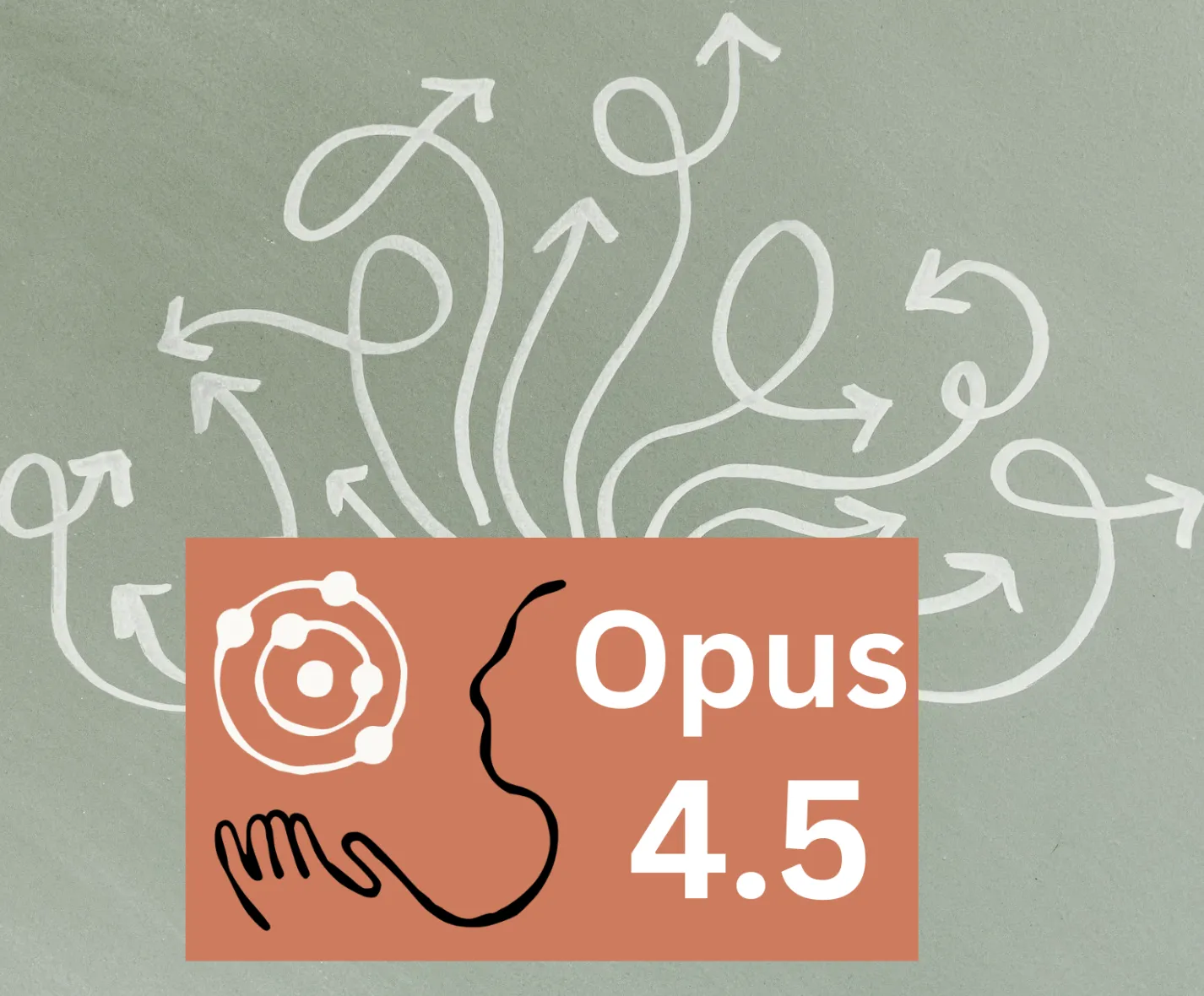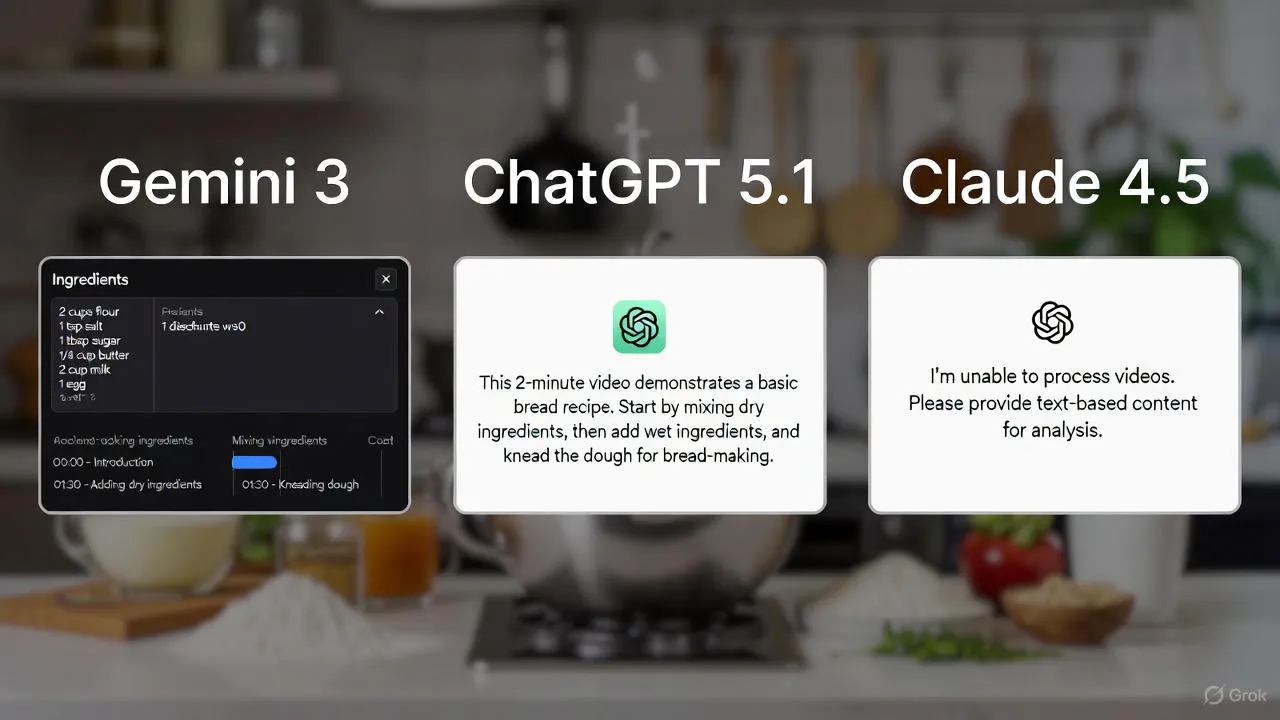DeepSeek-V4 MoE: Inside the 1-Trillion Parameter Open-Source Breakthrough

Author: Boxu L
Introduction: Pushing Sparse Models to Trillion-Scale
DeepSeek-V4 has taken the AI community by storm as the largest open Mixture-of-Experts (MoE) language model to date. An arXiv preprint detailing this 1 trillion-parameter model exploded online, highlighting a paradigm shift in how we scale AI. Unlike dense models that activate all weights for every token, MoE models like DeepSeek only activate a small fraction of their parameters at a time – typically <10% per token[1]. This sparse activation is the feature that makes trillion-parameter models feasible[1]. In DeepSeek-V4’s case, roughly 32 billion parameters (≈3% of the total) are used for any given input token, leveraging massive capacity with far lower compute costs than an equally large dense model.
Why the buzz? For one, DeepSeek-V4 is the biggest open-access MoE model yet, surpassing predecessors like DeepSeek-V3 (671B params) and even rivaling closed models in many tasks[2]. Its release under a permissive open-source license means anyone can experiment with or deploy a model at GPT-5 scale – a dramatic development in an era where top models are often proprietary. Moreover, early benchmarks suggest that DeepSeek-V4 delivers cutting-edge performance in specialized domains like math and coding (where MoE’s expert specialization pays off), at a fraction of the cost of previous large models[3][4]. All these factors combined have made DeepSeek-V4 a viral sensation among researchers and engineers.
Largest Open MoE Model: Key Specs and Innovations
To appreciate DeepSeek-V4, it helps to know the key technical details and how it compares to other frontier models:
Table: DeepSeek-V4’s 1T-param MoE in context with similar next-gen models. “Active” refers to the parameters used per token (MoE models route each token through a subset of experts). Context = maximum sequence length the model can handle.
As shown above, DeepSeek-V4 joins an elite club of trillion-parameter models alongside other recently announced Chinese models like Kimi K2 and Qwen3-Max. All these leverage sparsely-gated MoE architectures to keep only tens of billions of parameters “active” at once[5]. In contrast, a dense model (like GPT-5) would need to use every weight each time – an approach that becomes prohibitively expensive beyond the 500B–1T scale[10]. Notably, DeepSeek-V4’s design reportedly uses a 16-expert pathway, meaning each token is processed by up to 16 expert subnetworks in each MoE layer, selected out of hundreds of available experts. This is a substantial increase from earlier MoE models (which often used Top-2 or Top-4 experts) and is aimed at maximizing the model’s expressive power through more fine-grained specialist routes.
Sparse Routing with a 16-Expert Pathway Architecture
Figure: Mixture-of-Experts architecture (conceptual). Instead of every input going through the same feed-forward network, MoE models have multiple expert FFN sublayers – here Expert1–4 – and a learned router activates only a subset (highlighted) relevant for each token. This “sparse” model greatly expands total capacity without proportional compute cost.
DeepSeek-V4 builds on DeepSeek’s proven MoE architecture that was introduced in V2/V3[11] and refined through the DeepSeekMoE research series. At its core, the model replaces the standard Transformer feed-forward layers with an array of parallel expert networks. For each incoming token, a gating router dynamically selects a handful of experts best suited to process that token’s content (e.g. some experts may specialize in code, others in math, others in common syntax). Only those selected expert networks are executed for that token, making the computation sparse.
Crucially, DeepSeek innovated on MoE routing to improve expert specialization and utilization. The DeepSeekMoE architecture introduced two key strategies[12]:
- Fine-Grained Expert Segmentation: Instead of a few massive experts, DeepSeek splits each feed-forward network into many smaller experts (in V3, 256 experts per MoE layer). This allows activating more experts per token (m×K instead of K) without increasing per-token cost[12]. In earlier MoE like GShard, a token might go to Top-2 experts; DeepSeek V3 increased this to effectively Top-14 by segmenting experts into finer pieces[13]. DeepSeek-V4 pushes this further – with a 16-expert pathway, each token engages 16 experts in parallel, providing a rich mixture of specialized computations. By keeping each expert relatively small, the overall compute per token remains manageable even as the total expert count (and total parameters) grows dramatically[12].
- Shared “Generalist” Experts: DeepSeek also designates a subset of experts as shared experts that always activate for every token[14]. These act as general knowledge pools to handle universal patterns (common language, general reasoning), ensuring that every token gets some general processing. Meanwhile, the other experts can focus on niche or complex patterns without redundantly re-learning basic knowledge[14]. This innovation mitigates the “expert redundancy” issue where multiple experts might otherwise converge to similar skills. By isolating $K_s$ shared experts for common knowledge, DeepSeek-V4 can dedicate the remaining experts purely to specialized knowledge domains[12].
The combination of fine segmentation and shared experts helps avoid expert overlap and collapse, a notorious challenge in MoEs. In traditional MoEs, if the router isn’t carefully managed, it might overuse a few experts and under-train others (“route collapse”). DeepSeek-V3/V4 address this with a load-balancing routing strategy that needs no auxiliary loss[15]. Instead of the extra loss term used in Switch Transformer to force expert utilization, DeepSeek’s router uses dynamic routing with adaptive capacity limits to naturally balance load[16]. V3’s auxiliary-loss-free strategy proved effective – training was stable and all experts remained well-utilized[17]. We can expect V4 to continue this approach, enabling a smooth training of hundreds of experts without collapse.
In summary, DeepSeek-V4’s architecture exemplifies state-of-the-art MoE design: sparse expert routing that massively expands capacity, a 16-expert activation pathway for richer combinations of expertise per token, and bespoke techniques to ensure experts specialize (via fine-grained splitting and shared generalists) and train robustly. It’s a model that “grows wide” through experts rather than “tall” through layers – a fundamentally different scaling strategy than the dense GPT series.
Cost Efficiency: Training & Inference at Scale
One of the most compelling aspects of DeepSeek-V4 is its cost-efficiency, both in training and deployment. Scaling to 1 trillion parameters might sound outrageously expensive, but MoE’s sparse computation keeps the actual costs far lower than a dense trillion-param model.
- Training Compute: DeepSeek’s team has repeatedly demonstrated economical training even at huge scales. For example, DeepSeek-V3 (671B params) was pretrained on 14.8 trillion tokens and fine-tuned with supervised and RLHF stages for a total training cost of only 2.788 million H800 GPU-hours[18]. This is remarkably low considering models like GPT-4 likely consumed tens of millions of GPU-hours. Training DeepSeek-V3 was also highly stable, with no loss spikes or restarts needed[17] – an impressive feat for MoE, thanks to their robust routing method. While exact V4 training stats aren’t public yet, it likely continued this trend of efficient scaling. MoE’s advantage is clear: you can increase total parameters 10× but only pay, say, 2–3× more in computation if you keep the same fraction activated[10]. Industry analyses note that MoE can yield ~3× faster training at fixed compute to reach a target loss, compared to dense models, by virtue of its sparse utilization[10].
- Inference & Usage Cost: DeepSeek has made headlines by delivering GPT-grade performance at a tiny fraction of the usage cost. The previous model DeepSeek-R1 (the instruct version of V3) was 30× cheaper than OpenAI’s text-davinci (o1) in per-token output cost[4]. This stems directly from the MoE efficiency – at inference time V4 only computes a ~30B-param forward pass per token, which is far easier to run than a 1T dense forward pass. In practice, this means even a trillion-parameter MoE can be served with moderate GPU clusters or even single machines for smaller batches, especially with optimized deployments. (Notably, Moonshot’s 1T Kimi K2 model runs with 4-bit quantization to further cut memory/compute needs[19].) Users have already reported that DeepSeek’s API is extremely affordable for large-context queries, enabling use cases that would be cost-prohibitive on closed APIs. The open release also means organizations can self-host V4 to avoid API costs entirely. Essentially, DeepSeek-V4 offers an “open GPT-5” at perhaps cents on the dollar in comparison to OpenAI – a huge win for accessible AI.
- Training Budget: In absolute terms, training a 1T-model is no longer reserved for tech giants. MoE’s efficiency plus increasingly powerful hardware have drastically lowered the barrier. For instance, Moonshot AI reportedly trained Kimi K2 (1T MoE) for only $4.6 million in cloud compute[20]. DeepSeek’s costs should be in a similar ballpark. While not cheap, this is orders of magnitude less than what a dense model of comparable capability would cost to train in 2025. Sparse models are effectively democratizing extreme-scale AI, allowing startups and academic labs to experiment at trillion-parameter scales.
In summary, by smartly trading off full utilization for sparse utilization, DeepSeek-V4 achieves near state-of-the-art performance with drastically lower compute. It embodies the MoE promise: “scale the model, not the cost.” This efficiency is a key reason why many experts see MoE architectures as the future of large AI models[21][10].
Performance Highlights: Specialized Strengths
Raw size aside, what can DeepSeek-V4 actually do? Early indicators suggest that it excels in areas where expert specialization is most beneficial – notably complex reasoning (math, logic) and coding – while maintaining strong general capabilities on par with the best models.
- Math and Reasoning: DeepSeek models have built a reputation for superb mathematical reasoning. DeepSeek-V3 achieved 89.3% on GSM8K (grade-school math) and 61.6% on the MATH benchmark (competition-level math)[3] – results rivaling GPT-4 and other top models. This was attributed to a special “thinking” training mode and MoE experts focusing on math skills. DeepSeek-V4 is expected to match or exceed GPT-5’s level on math reasoning tasks[3], essentially closing the gap with the very latest closed models in this domain. Such strong performance in math word problems and step-by-step logic is a big deal, as these tasks benefit from the mixture-of-experts approach (e.g. some experts can internalize algebra, others geometry, etc., dividing the problem space). In practical terms, for any application requiring complex calculations or symbolic reasoning, V4 would be a top choice.
- Coding and Debugging: MoE has similarly boosted coding abilities. Between DeepSeek V2.5 and V3, the code generation performance jumped from 17.8% to 48.4% on their internal benchmark[22] – a massive ~30% absolute gain, largely due to the expanded expert count and training. While specific V4 coding metrics aren’t yet published, it likely continues this upward trajectory. Competing MoE models like Kimi K2 report state-of-the-art code reasoning scores (~71% on a challenging multi-step code benchmark)[23][24], indicating that sparse models are now leading in coding-related intelligence. DeepSeek-V4 has been positioned as a go-to model for “AI coding assistant 2025” use cases[25][26]. Its ability to hold a 256K or larger context means it can ingest entire codebases or multiple files and reason about them holistically – something GPT-4 (32K max) struggles with. Users can expect more reliable code generation, better debugging suggestions, and improved handling of long, complex coding tasks compared to previous open models[27][28].
- General Knowledge and Benchmarks: In broad NLP and knowledge benchmarks, DeepSeek-V4 is anticipated to perform on par with other cutting-edge models. DeepSeek-V3 already outperformed other open-source LLMs and was comparable to leading closed models in many evaluations[2]. V4’s extra capacity and fine-tuning should only improve upon that. It likely competes closely with contemporaries like Qwen-3 (which leads on Chinese and multilingual tasks) and Claude 3.5, while coming near GPT-4/GPT-5 on mainstream English benchmarks. One notable advantage is V4’s extremely large context window (reportedly 128K tokens or more). This enables use cases like ingesting long research papers, lengthy contracts, or multi-turn agent planning. For example, Qwen-3’s 256K context was demonstrated to handle entire code repositories and long dialogs[29]; DeepSeek-V4 should offer similar or greater context length, greatly benefiting tasks that involve cross-referencing or reasoning over long documents.
- Human-Alignment and Usefulness: With R1, DeepSeek showed it can fine-tune models to be helpful and harmless for general users, reaching parity with OpenAI’s early GPT-4o model in alignment while being much cheaper[4]. We can expect a DeepSeek-R2 (the instruction-tuned version of V4) to be released or in the works, which would likely undergo Reinforcement Learning from Human Feedback (RLHF) to refine its outputs. The open MIT license and strong performance already led to DeepSeek-R1 being integrated into many platforms (from Microsoft Azure to Hugging Face to local assistants)[30][31]. If V4 maintains this open and adaptable ethos, it will quickly propagate through the ecosystem as well – from chatbots to productivity tools – providing a viable free alternative to closed models for a wide range of applications.
In short, DeepSeek-V4 appears to play to MoE’s strengths: it’s a math wizard, a capable coder, and a solid all-round conversational AI. It may not vastly surpass models like GPT-5 on every single task (GPT-5 might still have an edge in some “generalist” areas or multimodal understanding[32]), but V4 can claim leadership or close second in several key domains, all while being more accessible. For many specific use cases – especially those requiring large context or domain-specific reasoning – it offers an unbeatable combination of high performance and low cost.
Implications and Outlook
The debut of DeepSeek-V4 signals more than just one company’s achievement – it represents a broader shift towards sparse expert models in AI’s future. As one analysis put it, “to reach trillion-parameter models that are trainable and deployable, sparsity through MoE is becoming the only viable approach.”[10] DeepSeek has proven this out by delivering a trillion-scale model that the community can actually use. The traditional dense scaling (just make the model bigger and brute-force it) is hitting severe diminishing returns and cost barriers[33][34]. Sparse models like DeepSeek-V4 point a way forward where we can keep expanding AI capabilities without proportionally exploding compute requirements.
From a market perspective, open Chinese models are now rivaling Western labs’ best. DeepSeek-V4 and its peers (Qwen3, Kimi K2) have drawn direct comparisons to GPT-5 in both media and benchmarks[35][36]. They often outperform GPT-4-class models in specialized areas (coding, reasoning) and do so at a fraction of the price[37][38]. This is forcing a competitive rethink: OpenAI and others may feel pressure to incorporate MoE techniques or drastically lower their costs. For end users and developers, it’s a huge win – we have more choices than ever at the cutting edge of AI, and many of those choices are open-source and budget-friendly. The pace of innovation in China’s AI ecosystem spurred by models like DeepSeek is remarkable; it’s driving down costs and pushing performance up, benefiting the global community.
Finally, it’s worth noting that DeepSeek-V4’s approach contrasts with another emerging pathway: reinforcement learning + memory-augmented models. The MoE strategy expands model capacity (parameters) and relies on routing to handle complexity, whereas some other research is focusing on enhancing model capability through external tools, long-term memory, or agent-like reasoning loops. For instance, models like Kimi K2 “Thinking” incorporate tool usage and an agentic loop with a 256K context to achieve remarkable long-horizon planning[5][39]. Similarly, upcoming systems are exploring explicit memory modules or neural retrieval to let smaller models outperform larger ones by looking up information. DeepSeek’s philosophy so far has been to pack as much knowledge as possible into the model parameters (and indeed, V4 might integrate some multi-step thinking in its fine-tuning). Both approaches – scaling via MoE and enhancing via memory/RL – are complementary. We may soon see hybrids that combine massive MoE networks with dynamic memory or tool interfaces. In any case, the success of V4 sets a high benchmark: any alternative approach must measure up to its performance and efficiency to be taken seriously.
Conclusion
DeepSeek-V4 MoE stands as a milestone in AI development – a 1-trillion parameter open model that realizes MoE’s promise of “going big and staying efficient.” It demonstrates that sparse expert models can achieve state-of-the-art results in challenging tasks, often beating dense models that are far more costly to train and run. By open-sourcing V4 under MIT license, DeepSeek-AI has also ensured that this breakthrough is widely accessible, spurring global research and application development. The model’s viral reception online is a testament to the community’s excitement: we are witnessing the closing of the quality gap between open models and the best closed models, and in some niches, the open models are pulling ahead[40][38].
Looking ahead, the techniques pioneered in DeepSeek-V4 – from 16-expert routing to auxiliary-free balancing – will likely influence many future architectures. As AI researchers, we now have evidence that scaling width (experts) can be as powerful as scaling depth or data, if not more so, for certain problems. Meanwhile, the next challenges are coming into focus: how to maintain coherence over million-token contexts, how to integrate real-time learning or memory, and how to further improve the “router” brain of MoE models. DeepSeek-V4 has opened a new chapter in this story, and its impact will be felt in both the engineering of AI systems and the economics of AI deployment (cheaper, more open models for all).
In summary, DeepSeek-V4 is a triumph of sparse model design – delivering GPT-5-like prowess through an army of experts, rather than one giant monolith. It underscores that the frontier of AI is no longer just about who has more data or TPU pods, but also about clever architecture and openness. As we contrast this MoE approach with other paths (like reinforcement learning + memory strategies in upcoming work), one thing is clear: the race to AGI now has multiple viable routes. And thanks to innovations like DeepSeek-V4, that race is accelerating in an open, cost-conscious, and extremely exciting way.
Sources:
· DeepSeek-AI, DeepSeek-V3 Technical Report, arXiv (2025) – Introduced 671B-param MoE (37B active); stable training on 14.8T tokens[18]. Demonstrated open-model performance on par with closed GPT-4-level models[2] with only 2.788M H800-hours training[41].
· DeepSeek-AI, DeepSeekMoE: Ultimate Expert Specialization, arXiv (2024) – Proposed fine-grained expert segmentation and shared experts to solve MoE overlap[12], enabling m·K experts active (DeepSeekMoE 2B matched dense 2B performance using 1/2 the compute)[42]. Validated scaling to 145B with substantial gains over GShard MoE.
· Joyce Birkins, DeepSeek Official Papers Overview, Medium (Feb 2025) – Explained DeepSeek V2/V3 architecture. Noted V3’s 671B total vs 37B active (only ~5.5%)[11], use of aux-loss-free load balancing[15], and 14 experts/token via expert splitting[13]. Highlighted V3’s stability and huge code capability jump (30%+) over V2.5[22].
· Cerebras Blog, MoE Fundamentals: Sparse Models (July 2025) – Discussed why <10% activation (as in DeepSeek) is a feature for trillion-scale models[1]. Showed that even 32 experts can yield 3× faster training or 5% better loss for same compute[43], and that DeepSeek’s 256-expert design exemplifies this efficiency[44]. Illustrated how MoEs outperform dense (Chinchilla-optimal) at fixed compute[45].
· Spectrum AI Labs (Paras), DeepSeek V4 vs Qwen3-Max vs GPT-5 (Nov 2025) – Compared latest Chinese models. Reported DeepSeek V3’s 89.3% GSM8K and 61.6% MATH, expecting V4 to match/exceed GPT-5 on math reasoning[3]. Noted Qwen 2.5-Max’s HumanEval 92.7% leads coding benchmarks[25], with DeepSeek V3 at 88.9%. Emphasized DeepSeek’s cost advantage (open-source, ~30× cheaper than OpenAI)[46][47].
· Reddit DeepSeek community posts (2025) – Highlighted R1’s cost: “performance equal to OpenAI-o1, at 1/27th the price”[48]. Also noted rumors of V4’s 1M token context window (unconfirmed)[49] and the use of “V3.2 sparse attention” as a testbed for long context before V4. Community feedback indicates extremely low API usage cost (fractions of a cent per million tokens) enabling indulgent long conversations[50].
· Moonshot AI, Kimi K2 Thinking – Architecture & Performance (Nov 2025) – Described a contemporary 1T-param MoE model. K2 uses 256K context, 1T total with 32B activated[5] and INT4 quantization for efficiency[51]. Showed strong long-horizon tool-using capabilities (200+ sequential calls) and state-of-the-art agent benchmarks[52], demonstrating the potential of combining MoE scale with agentic reasoning loops. K2’s training cost ~$4.6M[20] exemplifies the new affordability of trillion-param training.
[1] [10] [21] [33] [34] [43] [44] [45] MoE Fundamentals: Why Sparse Models Are the Future of AI
https://www.cerebras.ai/blog/moe-guide-why-moe
[2] [17] [18] [41] [2412.19437] DeepSeek-V3 Technical Report
https://arxiv.org/abs/2412.19437
[3] [8] [25] [26] [27] [28] [29] [32] [35] [36] [37] [38] [40] [46] [47] DeepSeek V4 vs Qwen3-Max-Thinking: The Chinese AI Models Beating GPT-5 | Spectrum AI Labs
https://spectrumailab.com/blog/deepseek-v4-vs-qwen3-max-thinking-chinese-ai-models-beating-gpt5
[4] [7] [22] [30] [31] [48] 生成式AI大模型动态周报 | jax
[5] [6] [19] [23] [24] [39] [51] [52] Kimi K2 Thinking: Long-Horizon Planning with 256K Context | by My Social | . | Nov, 2025 | Medium
https://medium.com/aimonks/kimi-k2-thinking-long-horizon-planning-with-256k-context-67cd1277fb72
[9] Benchmark evaluation of DeepSeek large language models in ...
https://www.nature.com/articles/s41591-025-03727-2
[11] [13] [14] [15] [16] Deepseek 4 Official Papers Overview: Deepseek MoE, MLA, MTP, Distillation | by Joyce Birkins | Medium
[12] [42] [2401.06066] DeepSeekMoE: Towards Ultimate Expert Specialization in Mixture-of-Experts Language Models
https://arxiv.org/abs/2401.06066
[20] Kimi K2 Thinking: The $4.6M Model Shifting AI Narratives
https://recodechinaai.substack.com/p/kimi-k2-thinking-the-46m-model-shifting
[49] [50] Deepseek V4. : r/DeepSeek
https://www.reddit.com/r/DeepSeek/comments/1nwvnmb/deepseek_v4/


